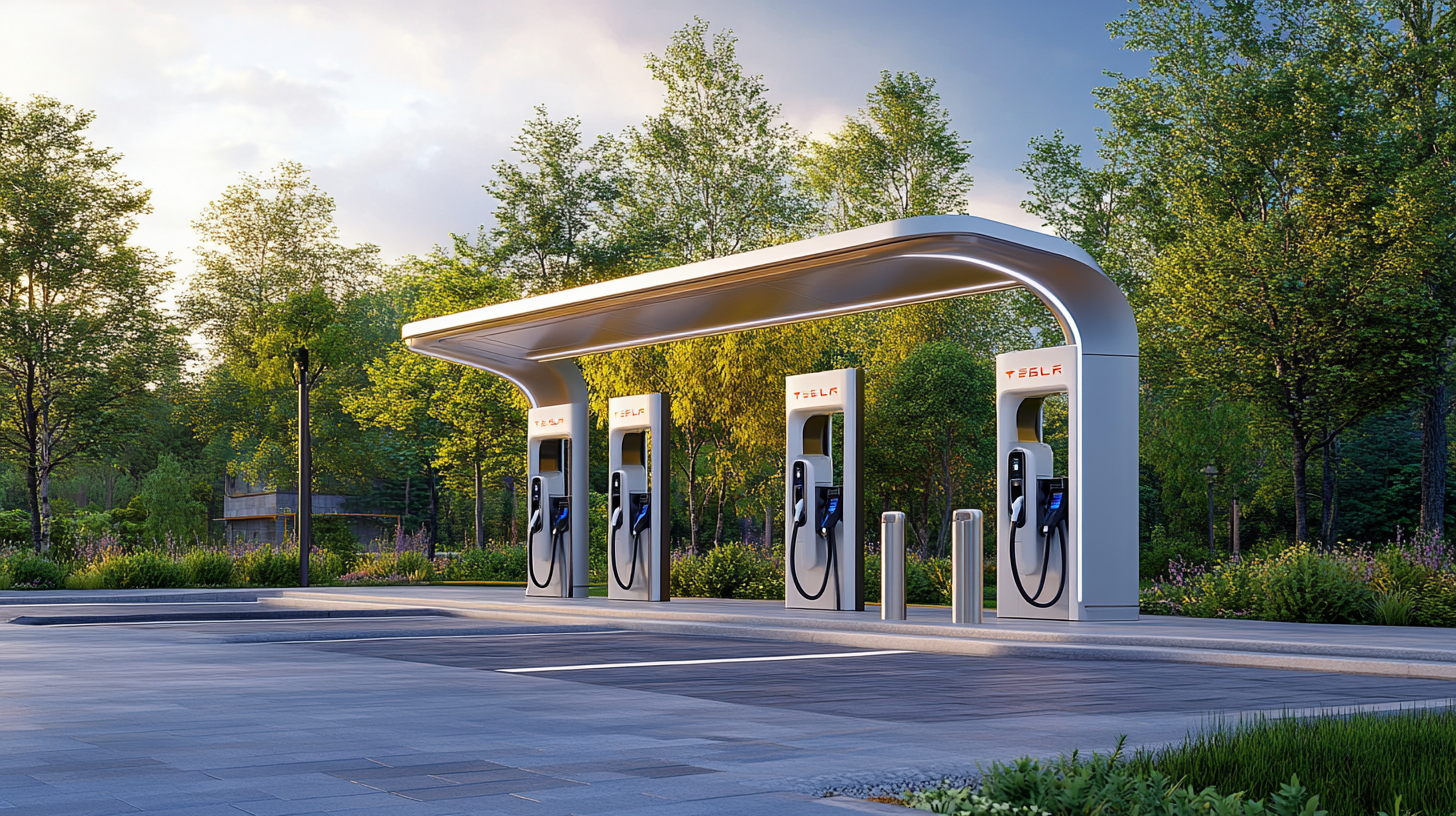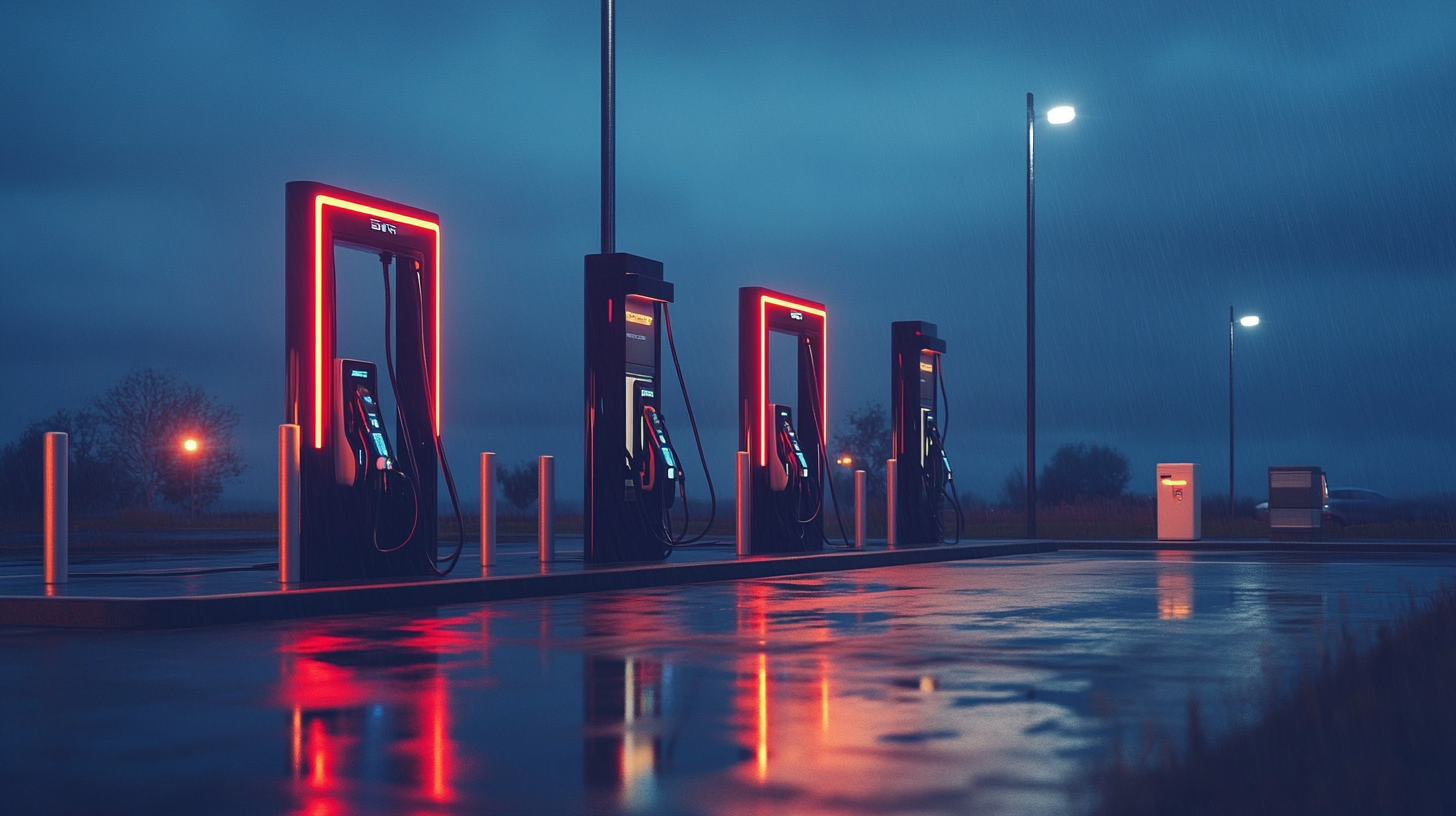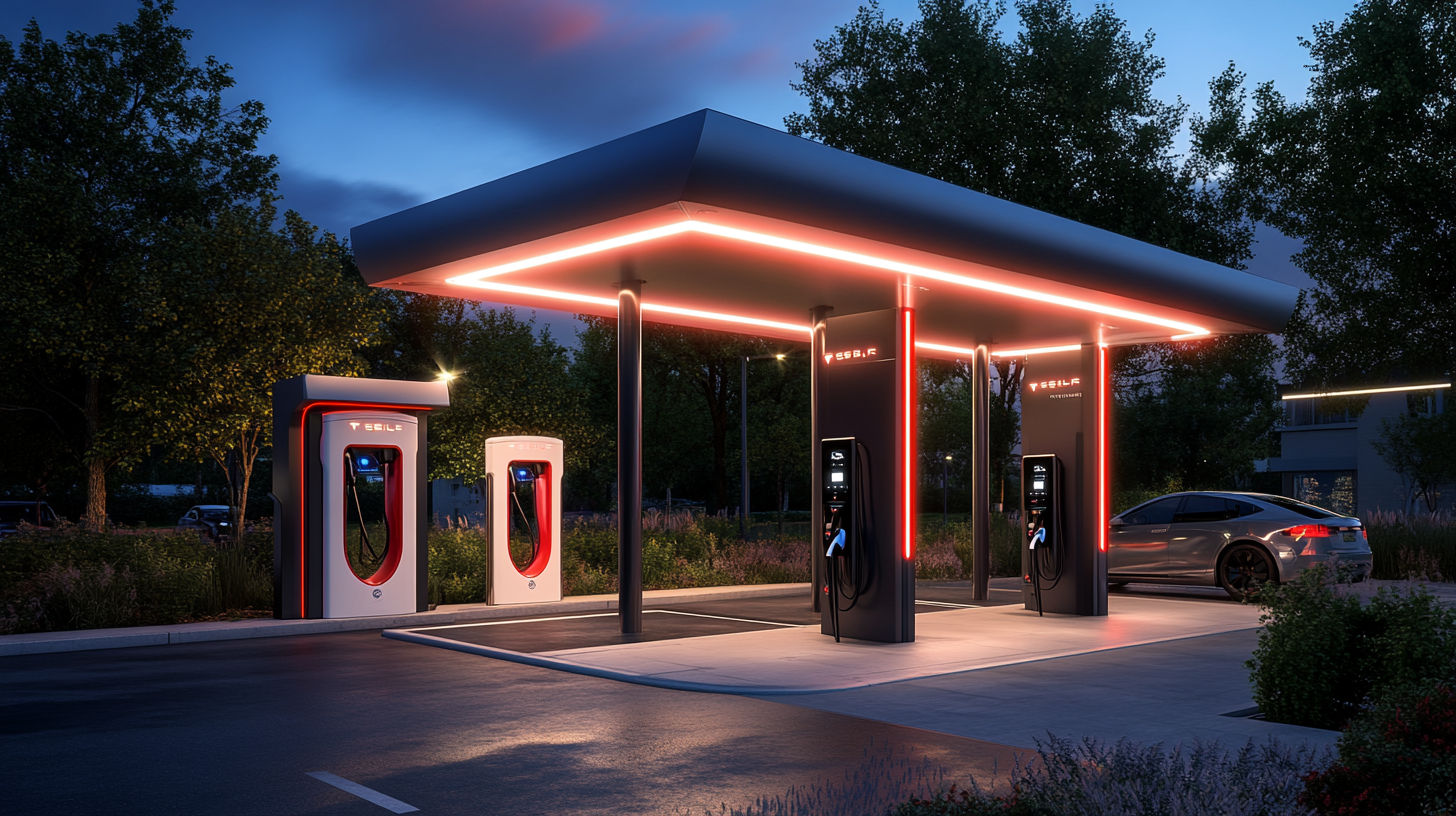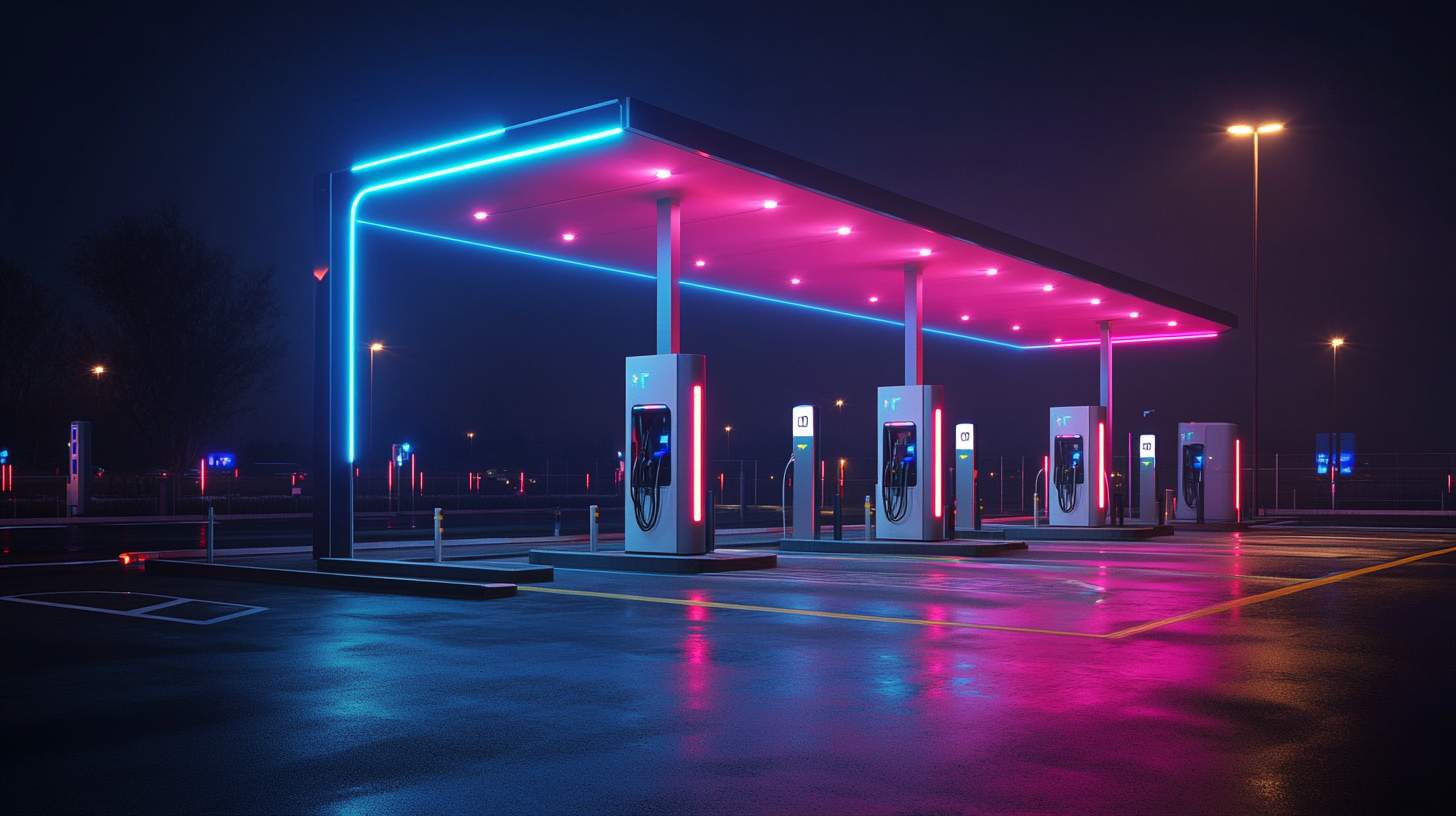As the electric vehicle (EV) market continues to expand rapidly, the demand for efficient and reliable charging infrastructure becomes increasingly critical. Among the various solutions available, DC Fast Charger stations stand at the forefront, offering quick and convenient charging options for EV users. The evolution of these charging stations is not only integral to supporting the growing number of electric vehicles on the road but also to enhancing the overall user experience, reducing range anxiety, and promoting widespread adoption of sustainable transportation.
In this blog post, we will explore the next generation of DC Fast Charger station solutions, highlighting the latest technological advancements and innovations in the field. From improved charging speeds to integrated payment systems and smarter energy management, these developments are poised to revolutionize the way we think about EV charging. Join us as we delve into the future of DC Fast Charger stations and their pivotal role in shaping a greener, more efficient transportation ecosystem.

The rapid evolution of electric vehicle (EV) charging infrastructure is being driven by a wave of emerging technologies that promise to significantly enhance the fast charging experience. According to a recent analysis of the electric vehicle market trends from 2024 to 2030, investment in advanced charging solutions is expected to surge, motivated by government incentives and a growing consumer base keen on sustainable transportation. In particular, the projected compound annual growth rate (CAGR) for the global EV charging infrastructure market is estimated to exceed 25% during this period, highlighting the urgency for innovative solutions. Among the notable advancements is the introduction of the no-trench DC fast charging technology by DC Grid, which facilitates rapid installation without the need for extensive groundwork. This development is crucial, as the integration of faster charging stations can alleviate range anxiety, one of the key concerns for potential electric vehicle owners. Furthermore, manufacturers like BYD are also pushing the boundaries with their ultrafast 1,000-kW charging stations, with plans to deploy thousands of these units as part of an aggressive strategy to bolster charging networks. As the landscape of EV infrastructure evolves, opportunities abound for businesses to invest in cutting-edge technologies. Reports indicate that by 2035, the demand for robust charging networks will skyrocket, necessitating innovative solutions that cater to both individual consumers and fleet operators. The convergence of market growth, technology advancement, and policy support paints a promising picture for the future of electric vehicle charging, positioning it as a cornerstone of the global move toward electrification.

The rapid evolution of electric vehicle (EV) technology has prompted significant advancements in DC fast chargers, positioning them as critical infrastructure for the growing EV market. The next generation of DC fast chargers promises to deliver enhanced charging speeds and improved user experiences, aligning with industry demands for efficiency and reliability. According to a recent report by the International Energy Agency (IEA), the number of fast chargers worldwide is projected to reach 1.5 million by 2030, reflecting the increasing reliance on electric vehicles globally.
One key feature of next-generation DC fast chargers is their ability to support ultra-high charging capacities, often exceeding 350 kW. This capability allows for rapid charging sessions, making it feasible for EV users to recharge their vehicles in under 15 minutes. The implementation of the Combined Charging System (CCS) in many modern chargers ensures compatibility across a wide range of EV models, further enhancing accessibility. Furthermore, advancements in battery technology and charging algorithms are yielding greater energy efficiency, with some estimates indicating that next-gen chargers can optimize energy use by up to 20%.
Another noteworthy aspect is the integration of smart technology in these charging stations. Features such as real-time monitoring, predictive maintenance, and user-friendly payment systems improve customer engagement and operational efficiency. A study by McKinsey & Company highlighted that smart charging solutions could result in operational cost savings of approximately 30% for operators. As electric vehicle adoption accelerates, the deployment of next-generation DC fast chargers will play a crucial role in creating a robust and user-centric charging infrastructure, paving the way for a sustainable future.

As the electric vehicle (EV) market continues its rapid growth, the need for efficient and reliable charging solutions has never been more critical. Ultra-fast charging stations are emerging as a key component in accelerating EV adoption. These cutting-edge chargers can deliver a significant boost of energy in a matter of minutes, providing drivers with the convenience they expect from traditional gasoline stations. This revolutionary technology not only alleviates range anxiety but also makes electric vehicles a more practical choice for everyday consumers.
One of the primary benefits of ultra-fast charging is the reduction of downtime for drivers. With the capability to charge an EV to 80% in approximately 20-30 minutes, busy individuals can quickly power up their vehicles during a lunch break or while running errands. This convenience encourages more drivers to switch from gasoline-powered cars to electric options, fostering a shift towards greener transportation solutions. Furthermore, as infrastructure investments in ultra-fast charging stations grow, we can expect a more extensive network that will make long-distance travel by electric vehicle a viable reality.
Additionally, the widespread adoption of ultra-fast charging can significantly lower the costs associated with EV ownership. As charging times decrease, the overall efficiency of the vehicle ecosystem improves, leading to decreased operational costs for both consumers and charging station operators. By enhancing the user experience and making electric vehicles more accessible, ultra-fast charging is poised to play a vital role in the transition to sustainable mobility. Ultimately, as these technologies evolve, the future of electric vehicles looks brighter than ever.

As the demand for electric vehicles (EVs) continues to rise, the need for efficient and sustainable charging solutions has never been more critical. The integration of renewable energy sources into DC fast charger stations represents a pioneering shift in how we approach EV infrastructure. By harnessing solar, wind, or hydroelectric power, charging stations can significantly reduce their carbon footprint and provide a cleaner alternative for drivers. This transition not only enhances sustainability but also aligns with global goals to combat climate change.
Incorporating renewable energy into charging infrastructure presents logistical challenges, yet advancements in technology have made it increasingly feasible. Smart energy management systems can optimize the use of renewable resources, ensuring that charging stations operate efficiently even during peak demand times. For instance, excess solar energy generated during the day can be stored in batteries for use at night, providing a reliable charging experience without drawing heavily from the grid. This not only stabilizes energy supply but also lowers operating costs for station owners while promoting energy independence.
Moreover, such integration often encourages localized energy production and consumption, creating a symbiotic relationship between EV charging stations and their surrounding communities. By investing in renewable energy solutions, charge point operators can engage with local stakeholders, fostering a more sustainable ecosystem. As we look to the future, the combination of DC fast chargers and green energy solutions will be a cornerstone of the transition to a more sustainable transportation network, driving us toward a cleaner, more electrified world.
As the electric vehicle (EV) market continues to surge, the demand for innovative charging solutions becomes increasingly pressing. Recent discussions at the DaoTech 2025 European Partner Summit highlighted the industry's shift towards smarter and greener charging infrastructures. This conference not only showcased pioneering technologies but also set the stage for collaborative efforts in enhancing the user experience for EV owners, particularly regarding charging safety and accessibility.
The future of EV charging lies in refining the interplay of technology and user-centric design. Advanced DC fast chargers are emerging as a key solution, promising rapid charging times while prioritizing safety features. Innovations such as automated payment systems and user-friendly interfaces are expected to streamline the charging process, making it more convenient for drivers. Moreover, the integration of renewable energy sources into charging stations signifies a substantial step towards achieving sustainable mobility.
As stakeholders in the automotive and energy sectors collaborate, we can anticipate a landscape where charging stations are not just functional but also smart and eco-friendly. This evolution involves not only upgrading existing infrastructure but also rethinking the entire charging experience, addressing the unique challenges faced by EV drivers. Embracing these upcoming trends will significantly contribute to a greener future, ensuring that as we progress in technology, we also pave the way for a sustainable ecosystem for generations to come.
